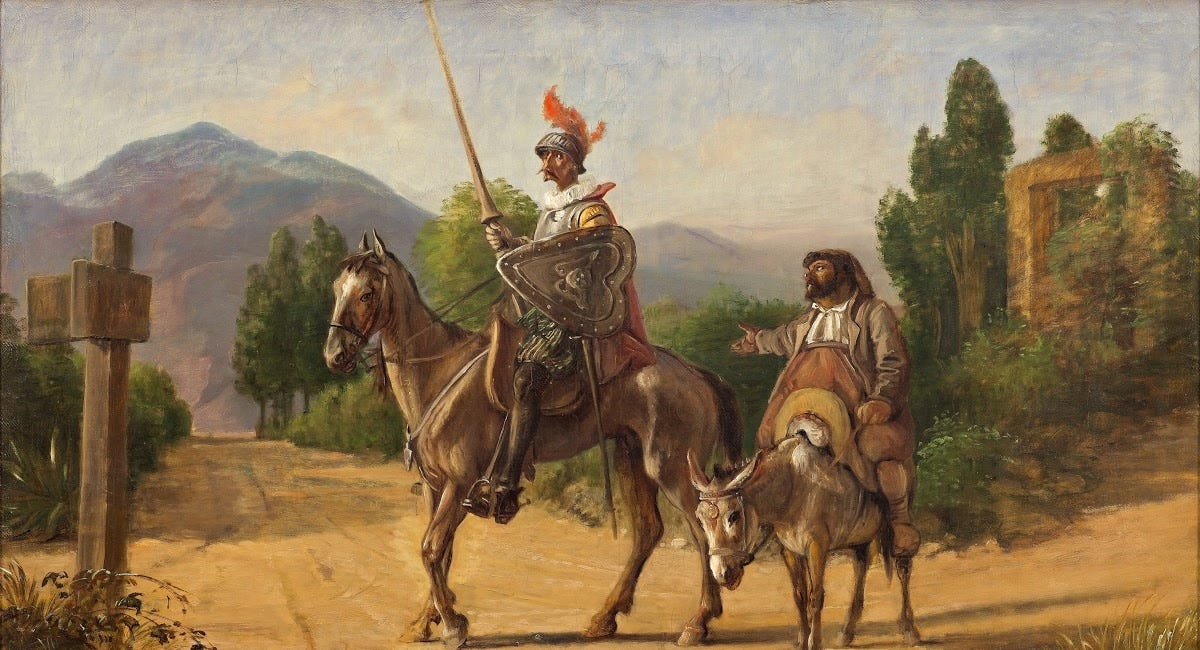Welcome to the third issue of Reality Check! This is a newsletter filled with essays, paintings, poems and other media that I find interesting or edifying. Enjoy!
“Life starts all over again when it gets crisp in the fall,” said Jordan. “And I guess it always will, no matter how old we get. It’s a way of clearing out the old and making room for something new.”
F. Scott Fitzgerald, The Great Gatsby
Among Gnomes and Trolls
In 1863, Bavarian man Josef Bauer moved to the town of Jönköping, Sweden. Even though he was totally penniless, he managed to open a successful charcuterie business, and married one of the local farmer’s daughters, Emma Charlotta Wadell. The couple had 4 children, which they raised in a lakeshore home in the city. Their middle boy, John, didn’t get on well at school, as he was always doodling and drawing in the margins of his notebooks. But the Bauers saw past John’s troubles at school and encouraged his artistic interests, even paying for him to travel to Stockholm at age 16 to study art. These studies were soon fruitful, and he landed a contract with a publisher to create drawings of the native Sami peoples in Lappland. This trip into Sweden’s wilderness was very influential for John, with the majority of his subsequent works being infused with the folklore and imagery of these Sami. After being married and having a son, John and his wife decided to buy a house in Stockholm. Only 500m from the Hästholmen port, the ship capsized and sank, with many of the passengers stuck in their cabins. John Bauer left behind many sketches, watercolours and oil paintings, but the ones he is most famous for are from Bland tomtar och troll (Among Gnomes and Trolls), a Swedish fairytale compilation. According to one of his friends, John believed that the creatures he drew actually existed, and were hiding among the trees of the dense northern forests. John’s art leaves the viewer with a sense of magic and mystery, but not of the kind that is always friendly to humans.
Murder as Measuring Stick
Many peoples’ whig understanding of history leads them to believe that society has become much safer and less violent over time, but this is simply not the case. Issues with comparing crime statistics both over time and between different geographical locations is the topic of Arctotherium’s newest article “Murder As Measuring Stick”. The article’s central thesis is that the murder rate is not a stable proxy for crime rates - as many experts have considered it to be. Reasons for this include: improved medical care, obesity, wealth, and improved forensic methods/surveillance. Considering a number of other statistics, Arctotherium concludes that:
In both Western Europe and the United States, the mid-20th century was several times safer than today, despite being younger, poorer, thinner, and having far worse forensics. We’ve clawed back some ground since the 90s, but we’re still very far from where we were. Nostalgia for a safer past is correct.
Several postwar Western European societies were about as criminal as modern Japan (while being much younger, poorer, and having far worse forensics).
Read the full article here.
Herr Mannelig
Sticking with our Swedish fairytale theme, I wanted to share this traditional Swedish song: Herr Mannelig (“The Courting of the Mountain Troll”). It’s about a female mountain troll who proposes to a young man. Despite her repeated advances and gifts, the man spurns her on the grounds that she is not a Christian.
You can listen to the song, with English subtitles, here (notice one of John Bauer’s illustrations in the background!).
The '“TikTok-ization” of Culture
Six hundred years ago, the House of Medici was the richest and most powerful political and cultural force in Italy (aside from the Church). Among other things, the Medicis were famous for their patronage of the arts: they funded the construction of Saint Peter's Basilica and Santa Maria del Fiore, and financially supported Leonardo da Vinci, Michelangelo, Raphael, Machiavelli, and Galileo, just to name a few. Needless to say, the Medici family is directly responsible for many cultural, scientific and artistic masterpieces that are still breath-taking. Unfortunately, some things have changed since the 15th century. The ‘powers that be’ in contemporary society have no interest in funding true art; instead, their only interest is money. This corporate greed - on behalf of large social media and media production companies - is the main topic of Ted Gioia’s article The State of the Culture, 2024. In the article, Ted shows how the desire to increase revenue leads to apps, algorithms and videos that encourage addictive behaviors. Many chronic consumers even report feelings of anhedonia: “the complete absence of enjoyment in an experience supposedly pursued for pleasure”. Overall, this trend towards the “TikTok-ization” of culture and art highlights the importance - not only of individual users to unplug - but also of true artists to unapologetically retain the integrity and traditional slowness of their crafts.
Conservative Atheists Don't Exist
For those of you that braved Cervantes’ 1000-page magnus opus Don Quixote, you will know that the main theme explored by Cervantes is the idea of the “useful fiction”. Don Quixote may be out to lunch because he believes he is a knight errant, but his obstinate refusal to compromise…
Scattered Meanings
I recently read Thomas Hardy's The Return of the Native. I like writing on books that I've recently read, because it forces me to think deeply about them before I move on to the next book. The first time I tried to write this essay, I failed. It just came out wrong, and I kne…
Thanks for reading Reality Check! If you have any feedback, please email me.
God bless,
Jonah
You can find the rest of my work here.










